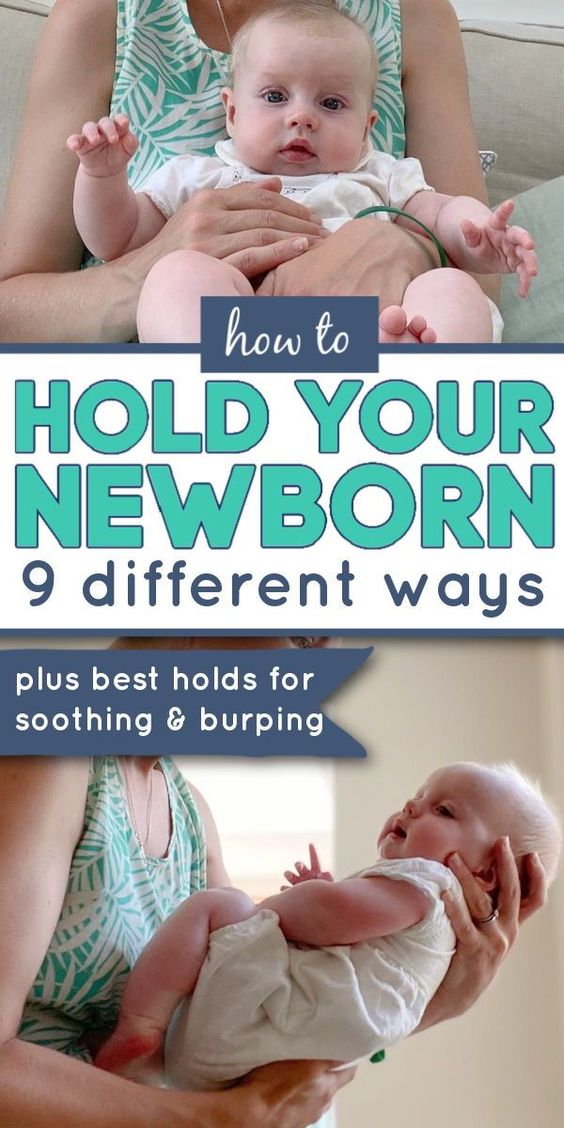
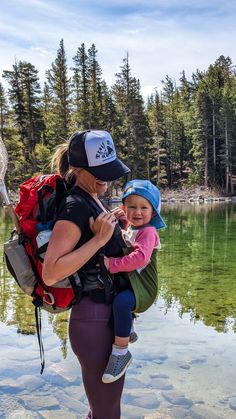


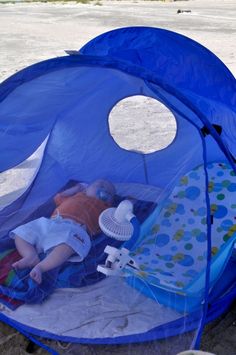
Nature Baby Infant Outdoors outside Newborn tips Safety
Feel Free to Take Babies Outside
Tips and How to’s
If you have an outdoorsy lifestyle before your baby is born, you can still be outdoorsy after the baby is born. It takes a little ingenuity, but there is no reason that you have to stay inside. In fact there are many benefits for your newborn to be outside. I am more concerned about babies going to supermarkets or into crowded (germ ridden) public places, than babies going outside.
Going outside is like reading a book to a baby. Newborns can not respond with giggles or joy, however you know there are tons of developmental and health benefits. So don’t think that just because they are not responding, that they are not enjoying it or reaping benefits from either activity.
The outdoors help babies learn.
When you bring a baby outside and begin pointing out all the wonderful things they can see, hear, touch, smell, and even taste (hello, rain!) then you are giving your child a robust learning experience that can build their vocabulary and fire up their imagination. One fun activity is to give your baby a tour of one particular sense, like smell or sight, and point out all of the things they can experience with that sense.
Spending time outside helps foster a love of nature.
If you give your baby lots of opportunities to commune with nature, then they might grow up to be a nature lover! Taking daily walks and talking about how much you love the sunshine, the singing birds, the feel of the air, or pointing out plants, bugs, and critters can ignite your child’s curiosity and appreciation for the great outdoors.
Newborns who spend time outside sleep better at night.
In a 2004 study, researchers found that babies who spent time outside in the sun slept better than babies who did not spend time outside. The results indicated that natural light affects a baby's circadian rhythms, and exposure to early afternoon sunlight helped their brains better identify when they should sleep and when they should wake.
BONUS
Going outdoors can make YOU happier.
Endorphins are chemical messengers from the brain that can do magical things like manage pain and even bring pleasure. As your blood and lungs pump during exercise, your brain releases endorphins and makes you happy. Grown-ups might know the feeling of a "runner's high." And kids might know this feeling as the pure joy sparked by frolicking outside. Allow your baby to roll around on a blanket in the grass or practice those first steps at the park, and they might just be able to bask in those blissful brain chemicals, too.
Taking your newborn baby outside should be a priority everyday
It’s sometimes hard to believe your newborn is actively learning at this stage, but they are. Try these activities to help them use their muscles, activate their senses, and build neural connections. Once you have a shelter from the sun, you can take your new baby outside daily. The idea that babies have to stay inside the house for several weeks after they're born is FALSE. In fact, as long as your baby is healthy, getting some fresh air can be great for mom and baby if you take a few precautions.
First, be careful not to overdress or underdress your baby when you leave the house. Your best bet is to put as many layers on them as you're wearing yourself, and keep a blanket handy. Dress them in layers.
Second, be sure to keep them out of direct sunlight. "Newborns' delicate skin burns easily, and that kind of early skin damage can increase their lifelong risk of skin cancer," Hansen says. "Keep them fully shaded with clothing or an umbrella."
What's most important, however, is for the baby to have a happy, healthy, and well-rested mom, Hansen says. "And natural light, exercise, and fresh air can help."
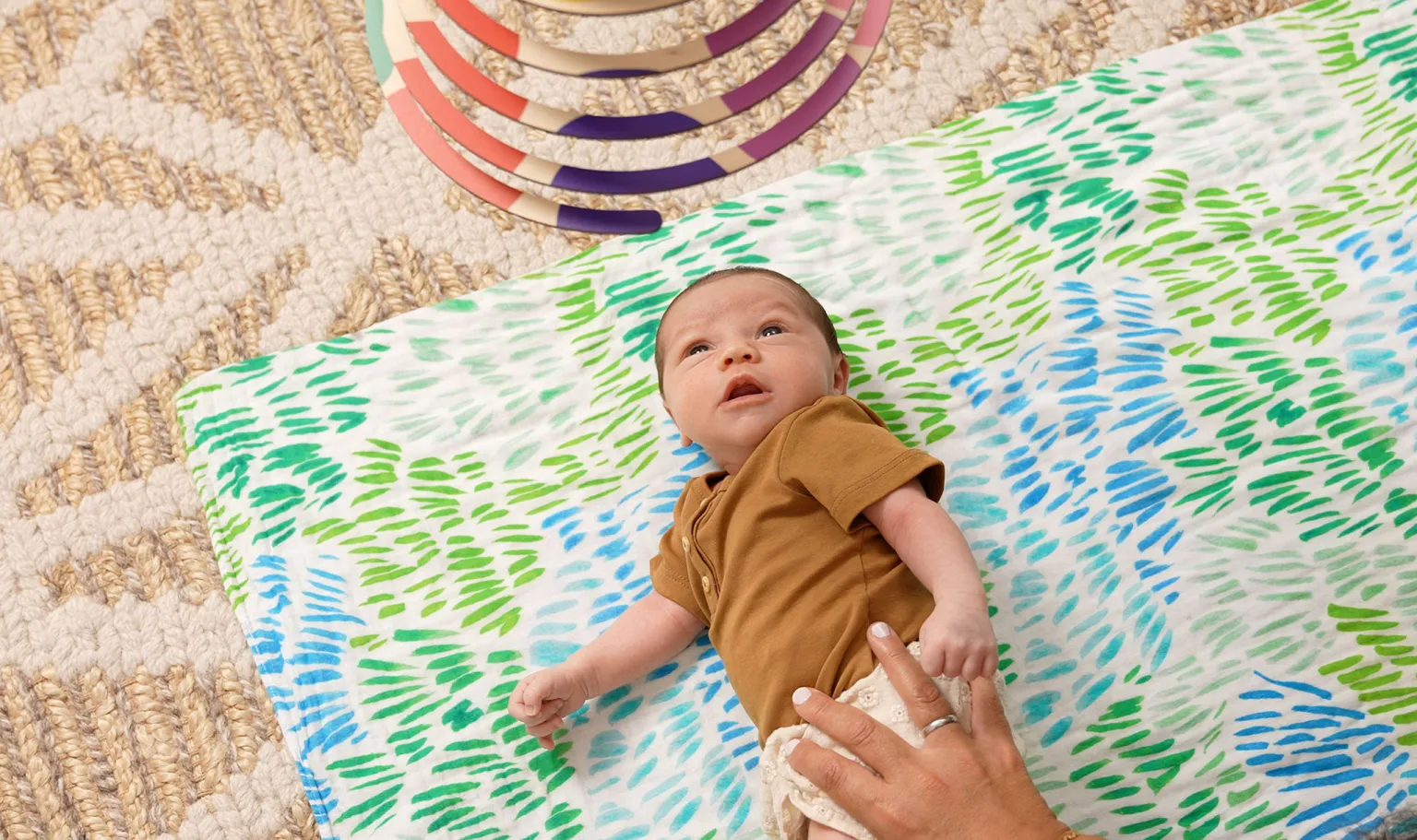
1. Side-lying neck stretch
After all that time in the womb, your baby needs to stretch out of the fetal position and use their muscles in new ways. This activity encourages your baby to turn their head to stretch their neck muscles.
Hang a mobile about 8 to 12 inches from your baby.
Lay your baby on their side with their head beneath the mobile.
For support, place one hand on their belly or hip and, if needed, the other on their back. You can also position a rolled-up blanket against their back.
Spin the mobile very gently to attract their attention.
Alternate sides so your baby stretches both sides of their neck.
2. Stimulate with tactile play
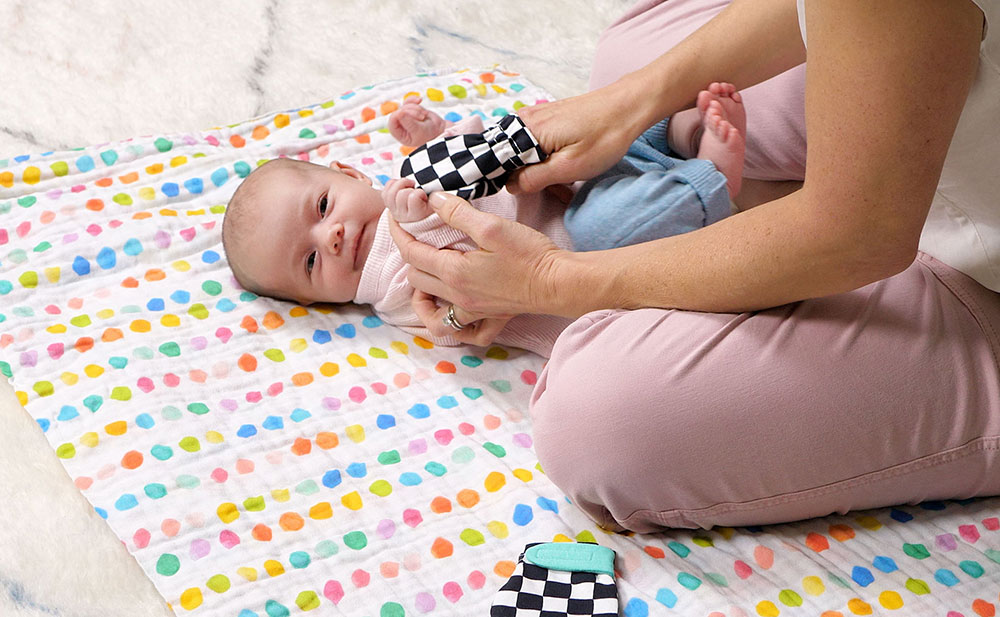
Stimulating your baby through touch and gentle pressure fosters the development of body awareness while helping you connect and bond.
To play, place a baby washcloth, silky scarf, or a mitten over a few of your fingers and use it to gently stroke your baby’s bare feet, hands, belly, and face. Repeat this often to help your baby learn what the different textures feel like against their skin and begin to associate each body part as theirs.
3. Exploring temperature
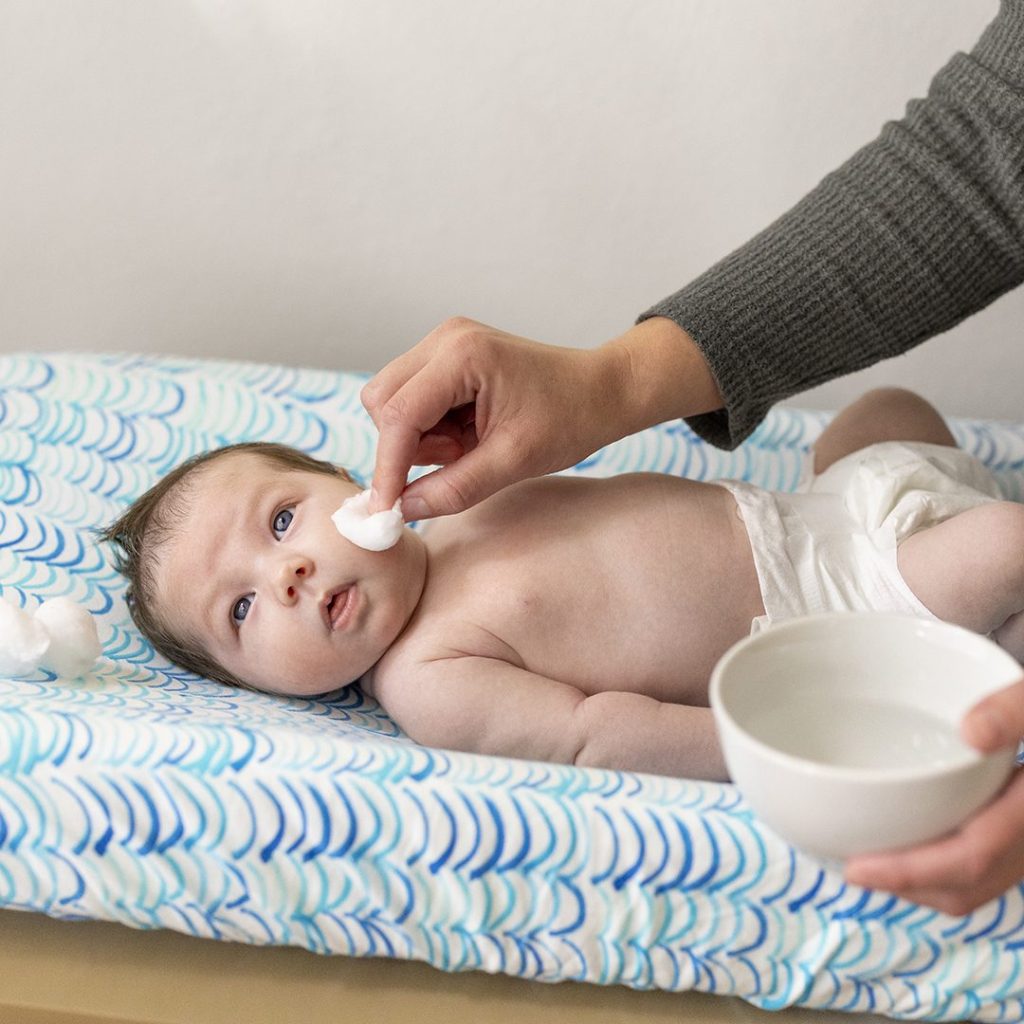
Introduce your baby to temperature differences for an early sensory experience.
Gather some cotton balls.
Fill one bowl with cool water and one with warm water.
Dip a cotton ball into the cool water, then gently brush your baby’s face and body with it.
Narrate as you go: “Does this feel cool on your hand? Do you like it?”
Then dip a cotton ball in the warm water, test its temperature inside your wrist to ensure it’s not too hot, and repeat the process.
Watch your baby’s facial expressions and body language as they experience the sensations on their skin. Please be sure to put the cotton balls and water safely away when play is done.
4. Tummy time from the start
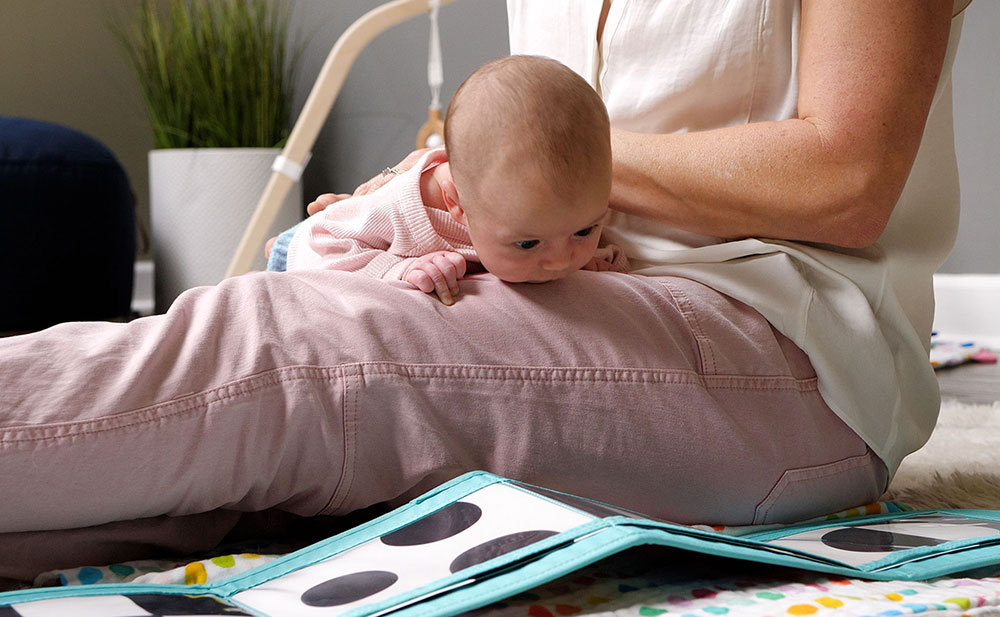
The American Academy of Pediatrics recommends that healthy, full-term babies begin tummy time in the first days of life.
The sooner you start placing your newborn on their belly, the more natural it will feel for them thanks to several newborn reflexes. Until your baby’s umbilical cord stump falls off, they may find it more comfortable to be on your lap or chest.
Lay your newborn across your legs and place the images in their line of vision, no more than 8 to 12 inches away.
Elevated on your lap, your child will have the opportunity to practice the newborn visual skill of focusing on an object. This both stimulates their eyesight and keeps them engaged as they stretch and strengthen their body.
Although it may not look like your newborn is doing much, trust that they’re hard at work. At this age, even 1 minute at a time at different times throughout the day can add up. If they start crying or seem uncomfortable, take a short break, then try again.
5. A calming massage
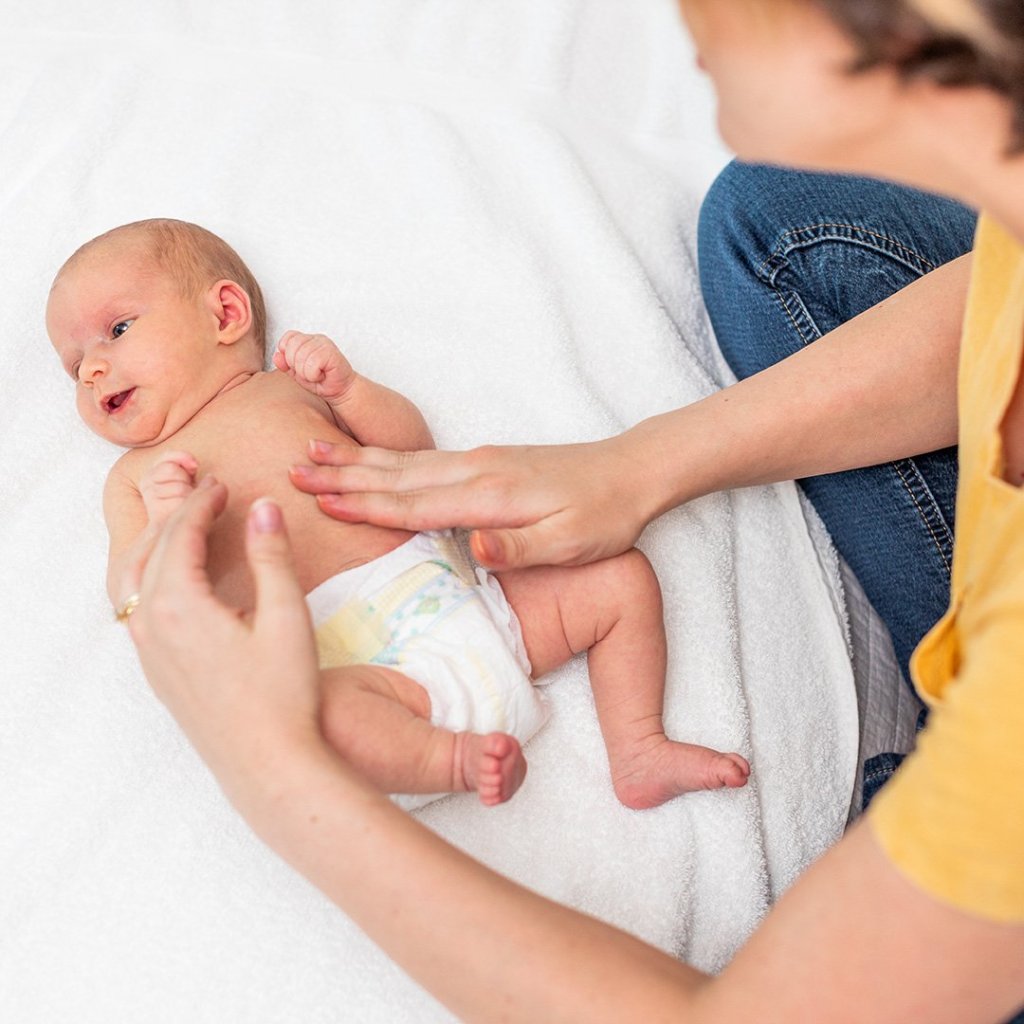
Baby massage promotes relaxation and sleep, and positively affects hormones in your baby’s body that control stress. It’s easy to do.
Choose a time and place where you won’t be interrupted.
Spread a blanket on a soft surface, such as a carpet, blanket outside or bassinet.
Lay your newborn on their back on the blanket.
Rather than rubbing, use a smoothing motion to gently massage their torso, shoulders, arms, hands, legs, and feet.
You can massage your baby with their clothing on or off, and use a baby-safe lotion or oil. How long should it last? Until your child indicates that they’ve had enough—or falls asleep
6. Focus play
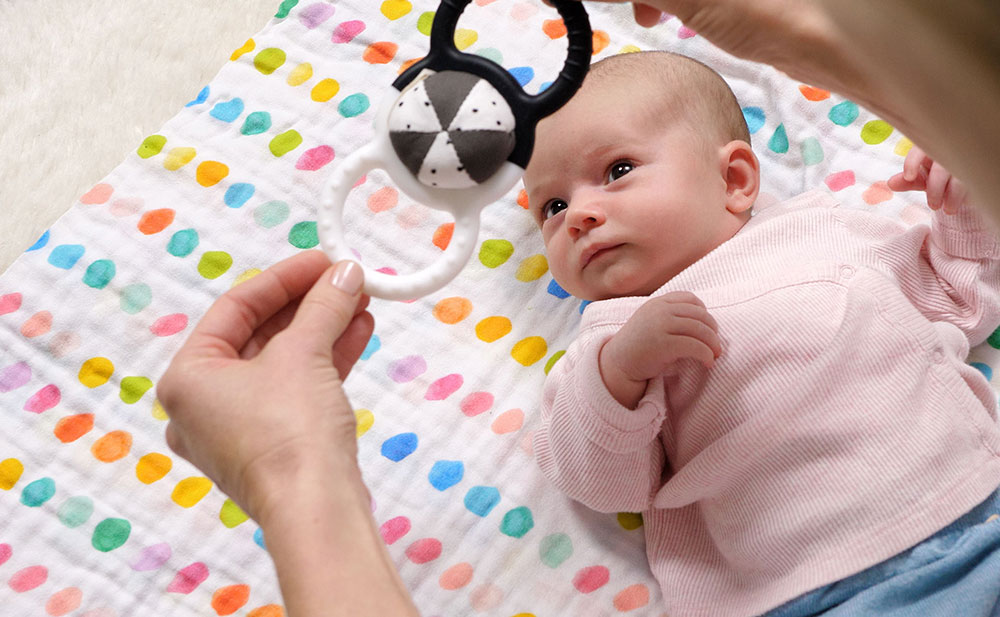
At birth, a baby’s vision isn’t fully developed. Right now, your child is learning how to focus their eyes on an object right in front of them. Since newborns see best in black and white, use a black-and-white rattle or other small toy.
• Hold the toy about 8 to 12 inches away from your baby and wait until they are able to focus on the plaything.
• Slowly turn the rattle so that your baby can see it from all angles.
• While they don’t understand that this is a three-dimensional object yet, the slow, subtle movements give your baby an opportunity to develop their visual skills.
7. Read together
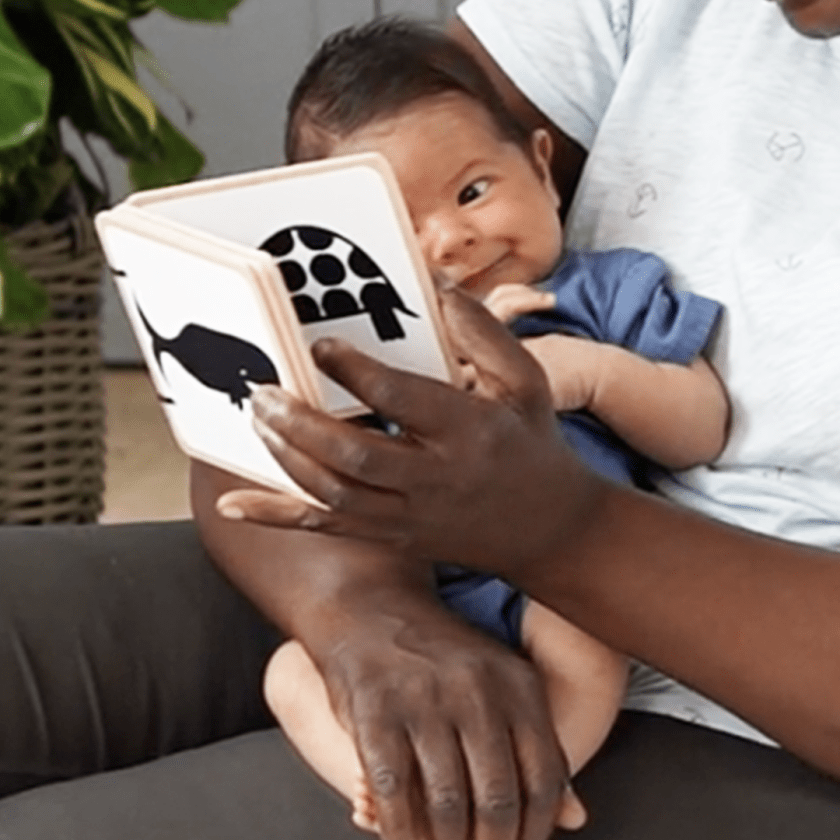
Reading to a newborn can feel a little strange, but they still gain a lot from learning that reading can be a pleasurable, loving experience. The world is a new and overwhelming place for your baby, and they take comfort in being close to you. Your familiar voice and scent help calm them so they can observe and begin to understand the world.

Holding a newborn baby can be a peaceful, heartwarming experience. Still, if you feel unprepared or nervous, it can steal that feeling from you. But it isn’t as difficult as you think, and they are not as fragile as they seem. LINK

In those first few weeks, your baby seems so very fragile. Their little heads and bodies flop around because they don’t have adequate neck control or muscle strength. You may feel like you don’t know how to play with your newborn or even if it’s safe to do so early on. Click Here for the benefits and ideas of how to play with a newborn below.
Superscript
As they get older...
Once they are responding to people and their environment
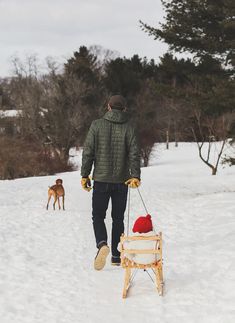
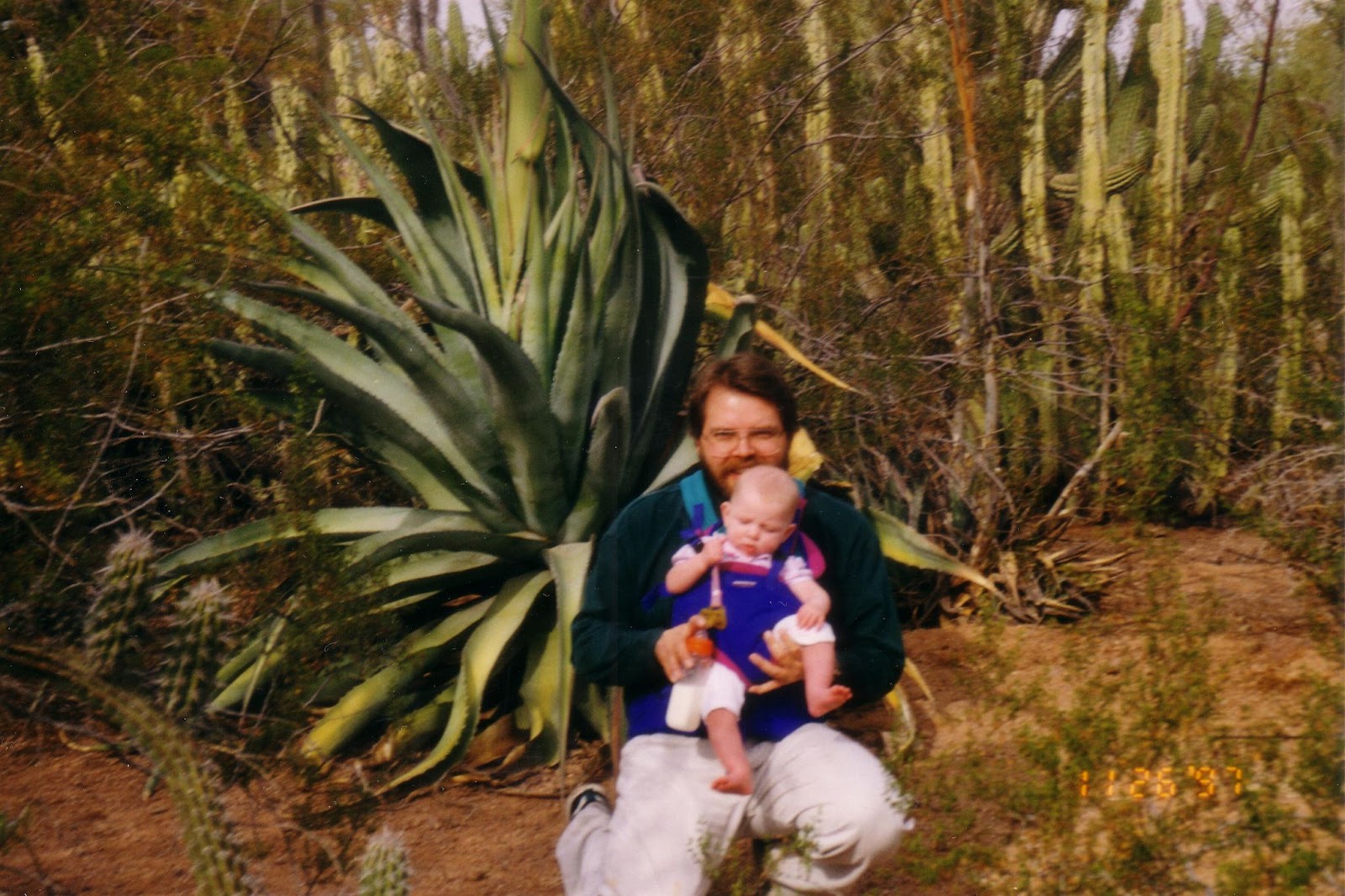
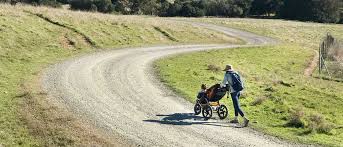
1. Take a walk
One of the simplest things you can do outside at any age, is to take your baby outside for a walk with you. I planned ahead and had the carrier and portable bassinet. The toboggan idea was from our pastor, an avid ice skater. I bow to the master of outdoor fun for babies in the winter. OK, before Jack was born he had 3 older children for practice. But I listened and watched him in the winter and learned from his shenanigans. I loved bonfires and feeding the wildlife for survival during the winter. So I needed ways of sharing that experience with them.
Outdoor activities for babies don’t have to be complicated or need a lot of planning. Whether your little one is in the stroller, baby carrier or just in your arms, a short walk around your yard or neighborhood will do you both a world of good. Simply being outside is a wonderful way to engage a baby's senses without overstimulating them. There’s something about just being outdoors that seems to calm babies. If your little one is having a hard time, melting down, crying for no reason – go outside! This is my go-to trick when our kids were babies (and it still works with school-aged kids!). A walk outside in the fresh air is more beneficial than you’ll ever know! Trust me, try it!
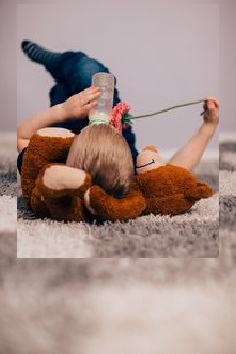
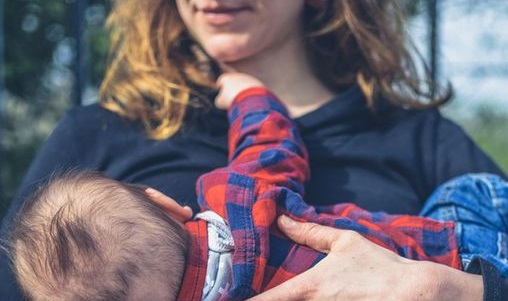

2. Eat outside
You’re already feeding your baby multiple times a day, so if possible, take a few of those feedings outdoors. If you’re a first-time mom trying to get the hang of nursing or feeding your baby, by all means, just do what you need to do to get your baby fed and stay sane. But once you get the hang of things, consider a change of scenery and feed your baby outside. Start in your backyard and move on to park benches or next to a stream once you get comfortable. Babies spend an unbelievable amount of time eating, so why not make the most of it and get some fresh air while you’re at it.
Once your baby is old enough to start purees or solids, continue to feed them outside! Move the high chair outside or set them in a Bumbo seat if they need support. Eating outside is a particularly great outdoor activity for babies because the cleanup is a breeze! No more scrubbing floors or walls when food gets spit or thrown!
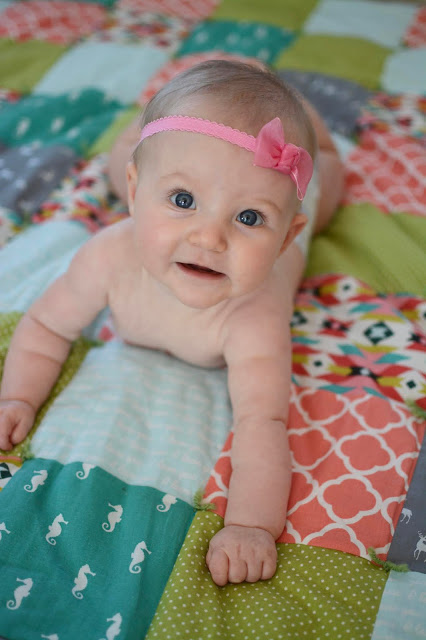
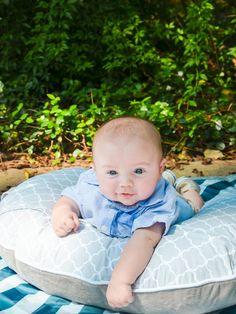
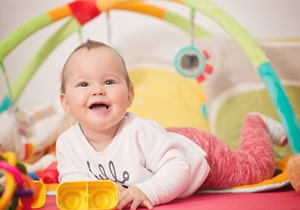
3. Tummy time
This is another activity that you’re probably already doing inside, so take it outside! Grab a blanket and some toys and move the action outdoors. Babies will love reaching for and touching new things, like grass and leaves. And when they’re finished with their tummy time, roll them on their back and let them see the sky.
If your baby hates tummy time, try supporting his chest with a nursing pillow or small rolled blanket. Toss lots of colorful toys, textures, and books within reach of his hands to keep him engaged.

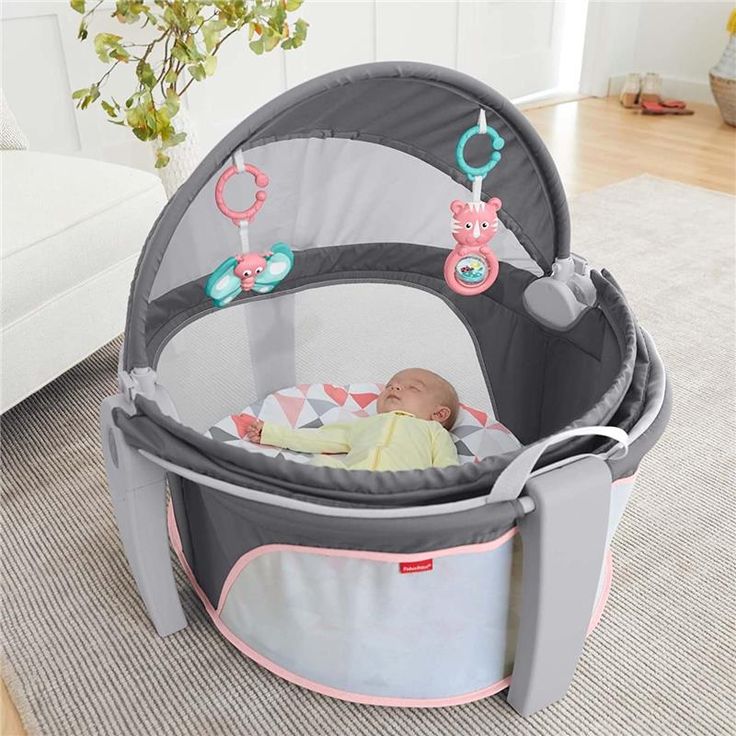
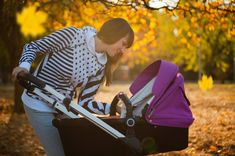

4. Take a nap
If you want your baby to truly benefit from all the wonders of being outdoors, try napping outside! Bring out a travel crib or pack and play (we love this one from Baby Bjorn) or just set up a safe space on the ground for your baby to sleep.
Babies in Scandinavian countries take naps in prams year-round as young as two-weeks old and in temperatures as low as -4F for up to three hours! Research by Marjo Tourula of the University of Oulu, Finland, shows that frigid napping not only promotes better daytime sleeping, but it also increases the duration of sleep. Other benefits, not yet borne out by research, purportedly include children being happier, more energetic, able to sleep better through the night, and capable of snoozing in any environment, even loud and bright.
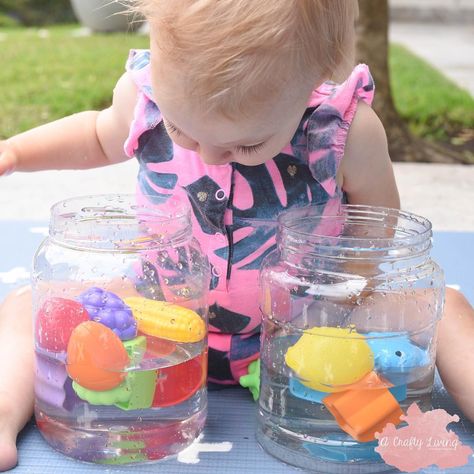
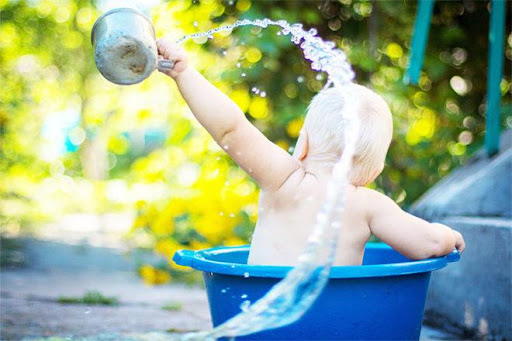
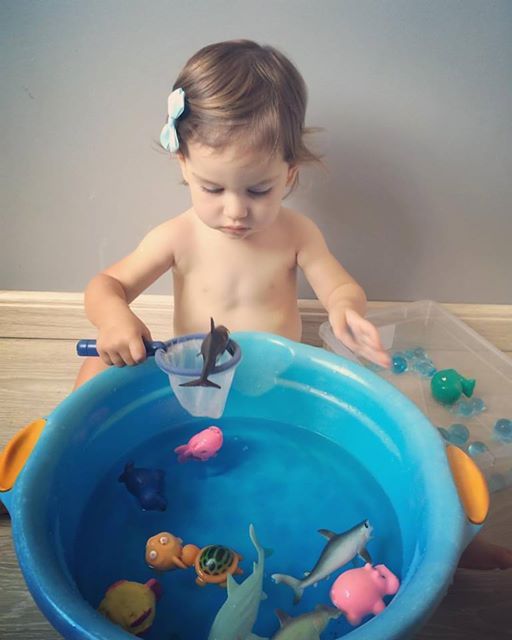
5. Water play
If your babies are anything like mine, they love water! If it’s warm outside, consider giving your baby a few bowls or trays of water to touch and splash with their hands. A baby pool filled with just a few inches of water could occupy my little ones for hours! Add measuring cups, spoons and scoops for extra fun. If your baby can stand, try a water table (we’ve had this one for years). And older babies love the novelty of the hose. There’s something about running water that absolutely fascinates them!
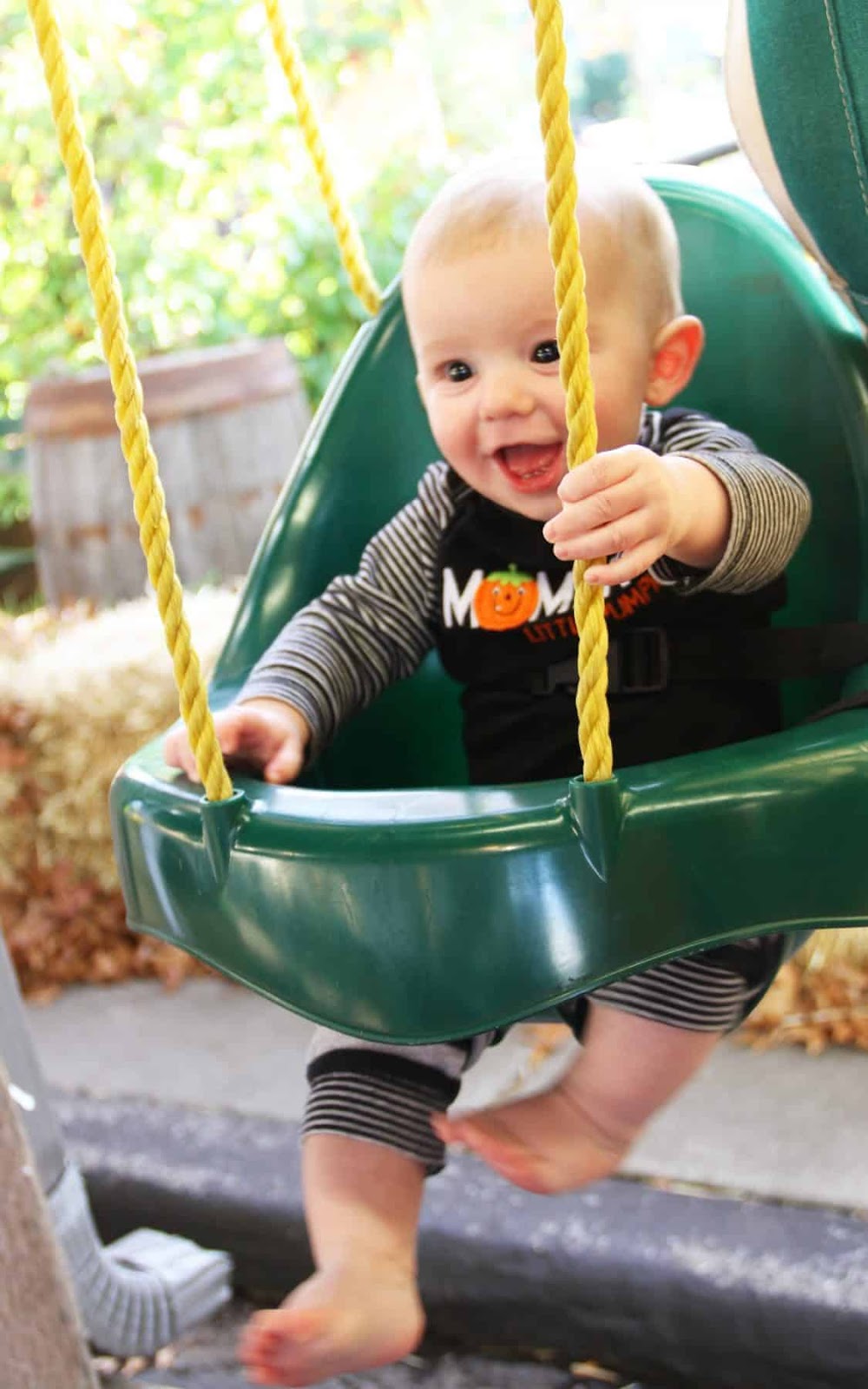
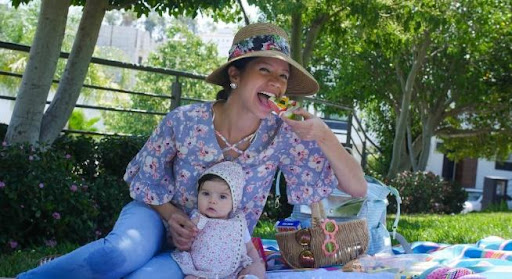
6. Visit a playground
Babies need time and fun places to work on developing new large motor skills, such as crawling, pulling up and climbing. Playgrounds can be perfect places for babies to experience new surfaces and textures, climbing on different levels and sliding! Plus, once your little one can sit up and has good head and neck control, try the swings! The swinging sensation is sure to bring on big smiles to your little one.
Pro tip: Consider visiting playgrounds during off-hours (school hours during the week), when there are not as many big kids around.
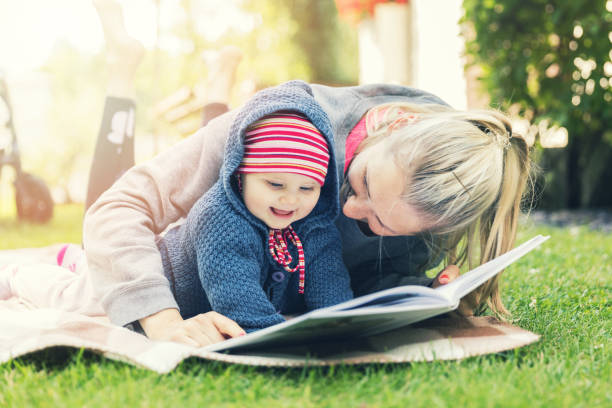
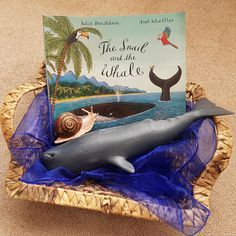
1. Read a book
Spread out a blanket under a shady tree and read your baby a few of her favorite books outside. Babies enjoy reading books anywhere, but taking them outside adds a whole new layer of fun and connection. Consider reading books that take place in nature, so you can point out natural elements (trees, grass, leaves) in the story as well as around you.
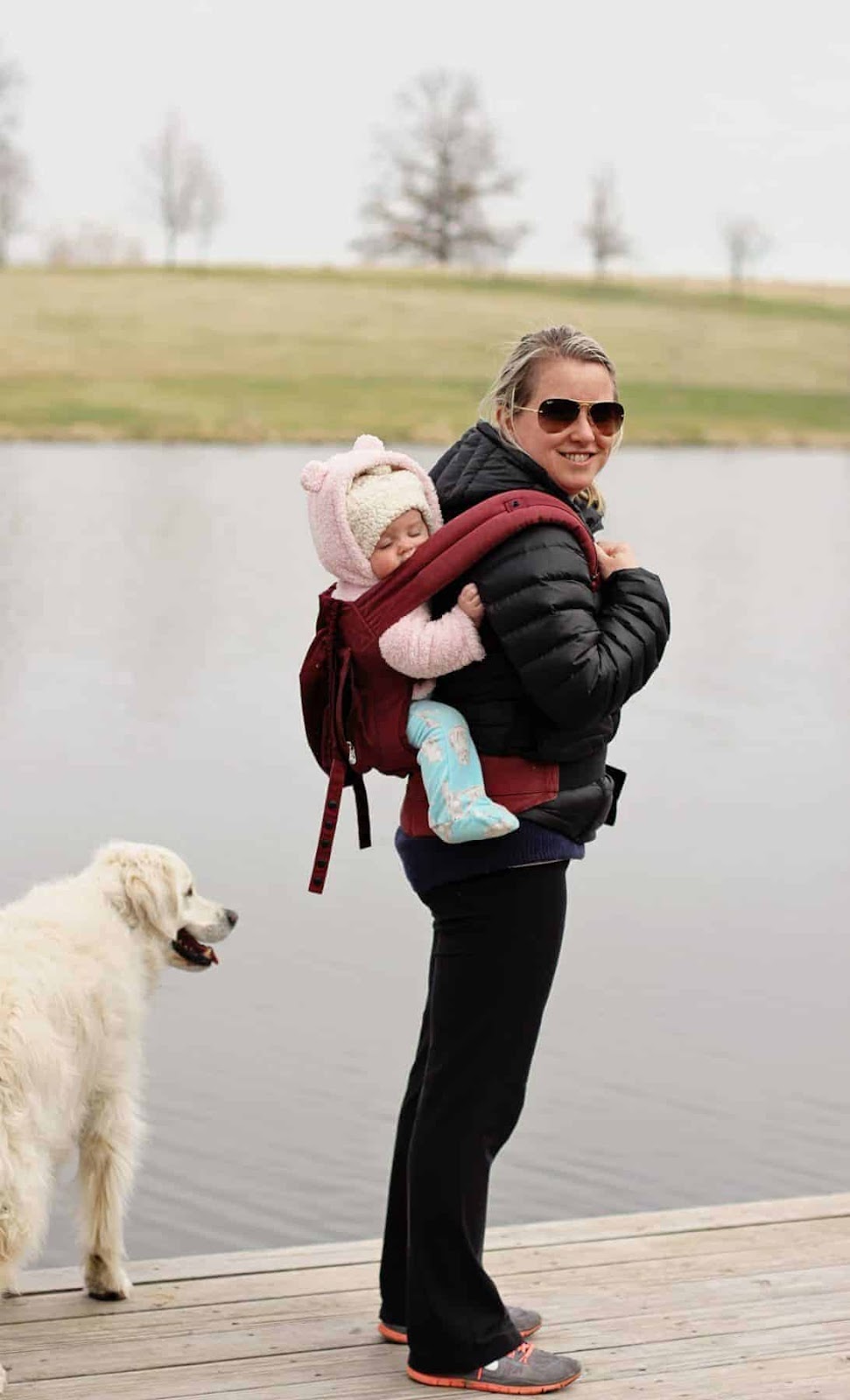
8. Go on Nature hike
If you’re feeling a bit more ambitious than a walk around your neighborhood, consider taking your baby for a hike. Hiking is one of the easiest outdoor activities for babies and doesn’t require much beyond what you’d need for a walk or quick outing. Hikes don’t have to be long, intense or elaborate (we recommend that they’re not). Wear baby in a sling/wrap or backpack carrier (we love this Osprey backpack) and simply go for a walk in the woods, nature center or local park. Choose a hiking trail where you can interact with nature and point out all the different sights (trees, flowers) and sounds (birds, water) to your baby. The sights, sounds, and smells of nature will stimulate their senses and the motion may even lull them to sleep. Remember to take your time and don’t overdo it.
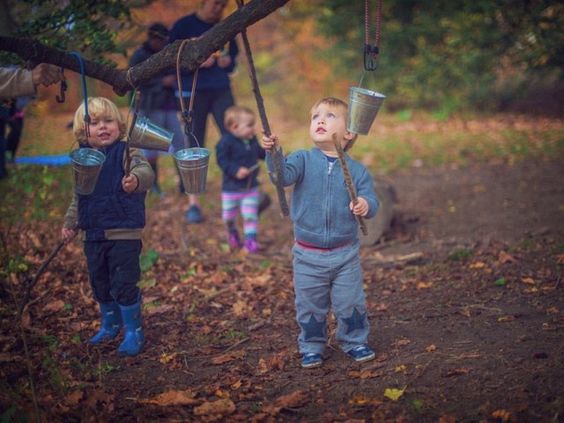
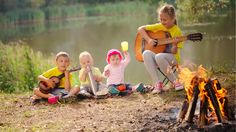
9. Jam session
Most babies are very intrigued by sound and making noise. Grab a few toy instruments and head outside for a fun music-making jam session. For instance, maracas, tambourines, keyboards and drums all make for excellent baby-friendly instruments. However, you don’t need special tools to jam out. Pots, pans, metal bowls and wooden spoons are also baby-safe and make plenty of entertaining noise.
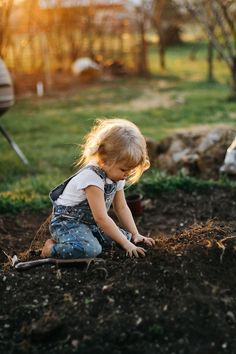
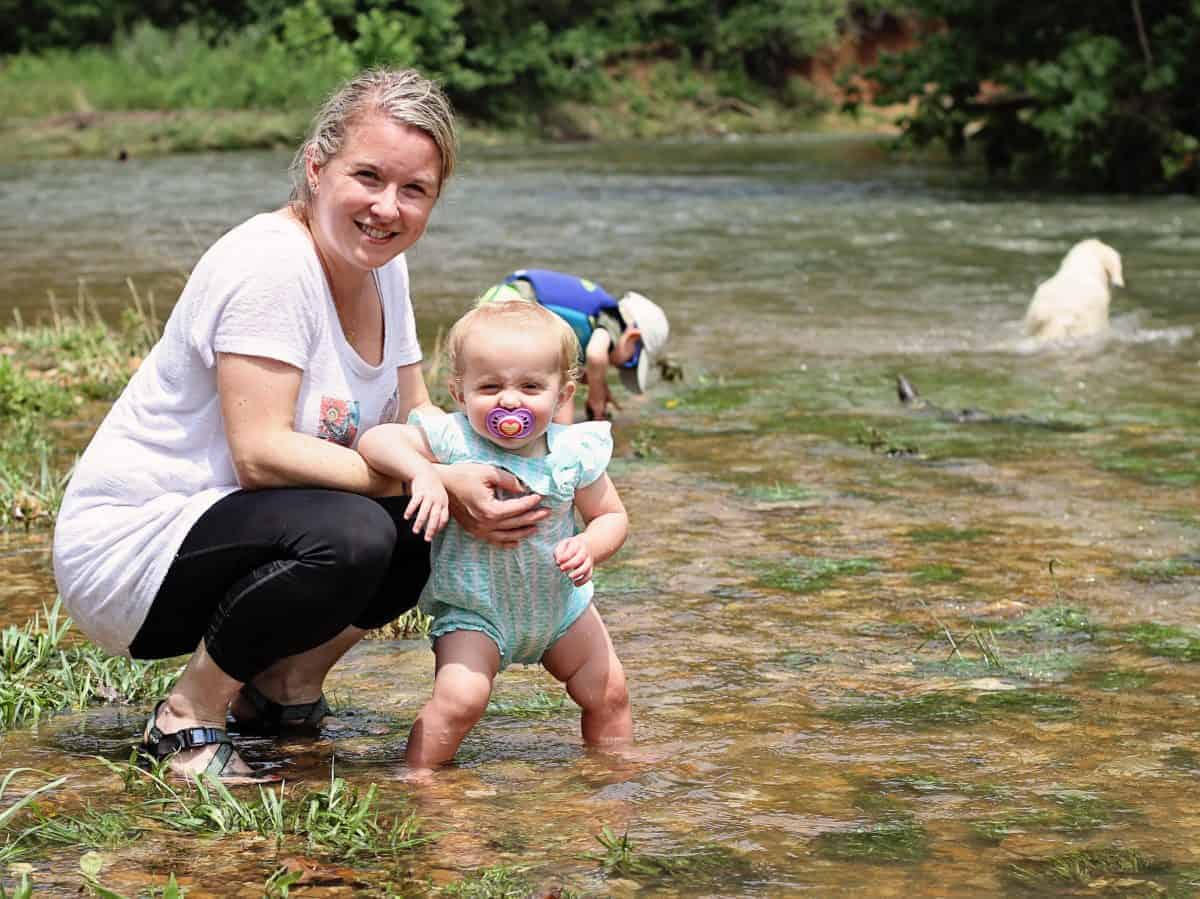
10. Sensory experience
Babies benefit greatly from new sensory experiences and the outdoors is a great place to explore. Have your baby sit on a blanket with a pinecone, a few large rocks, some sticks, etc. Encourage her to touch and explore the different textures. Let your baby feel the grass with her bare feet and touch it. Allow her to touch, feel and taste snow. Hand him dry leaves to crunch in his hands. These activities are great for babies to be able to experience sensory experiences at their own level.
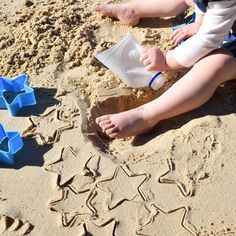
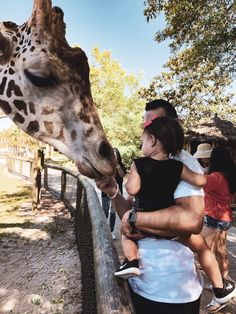
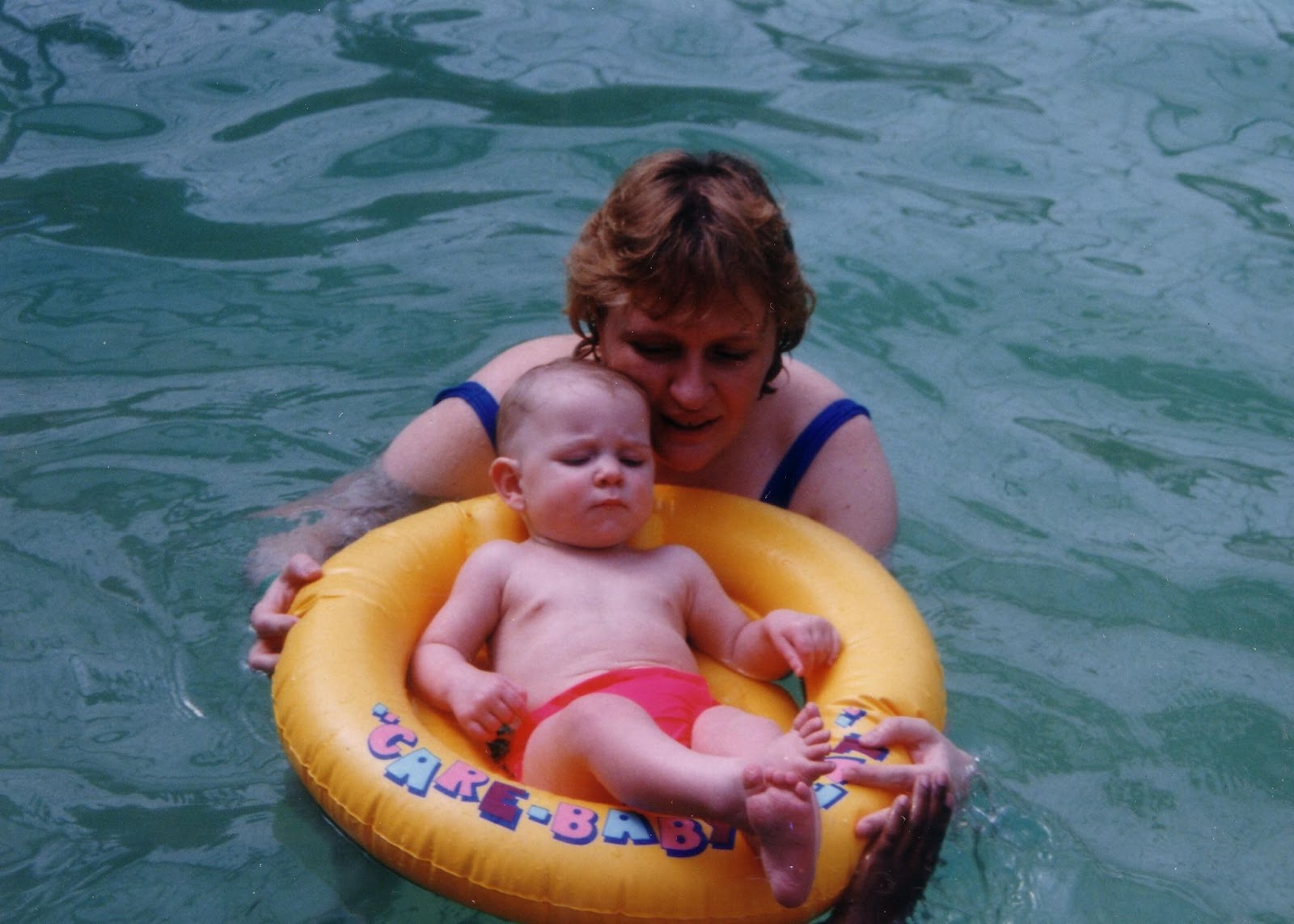
11. Observe a new or public place
Once your baby is old enough to take in his surroundings and not get crazy overwhelmed by activity, take him somewhere busy to observe the sights, sounds and smells of a new place. From a safe vantage point, let your baby discover the hustle and bustle of a busy farmers market on a Saturday morning. Watch and listen to heavy equipment work at a construction site. Take your baby to your local zoo or aquarium to look around at all the animals in action (as well as the zoo of people all around). Or go to the beach to experience the sound and feel of the water, as well as the sounds of the people, seagulls and waves.
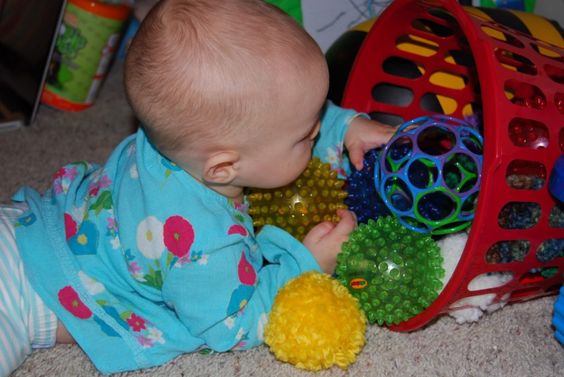
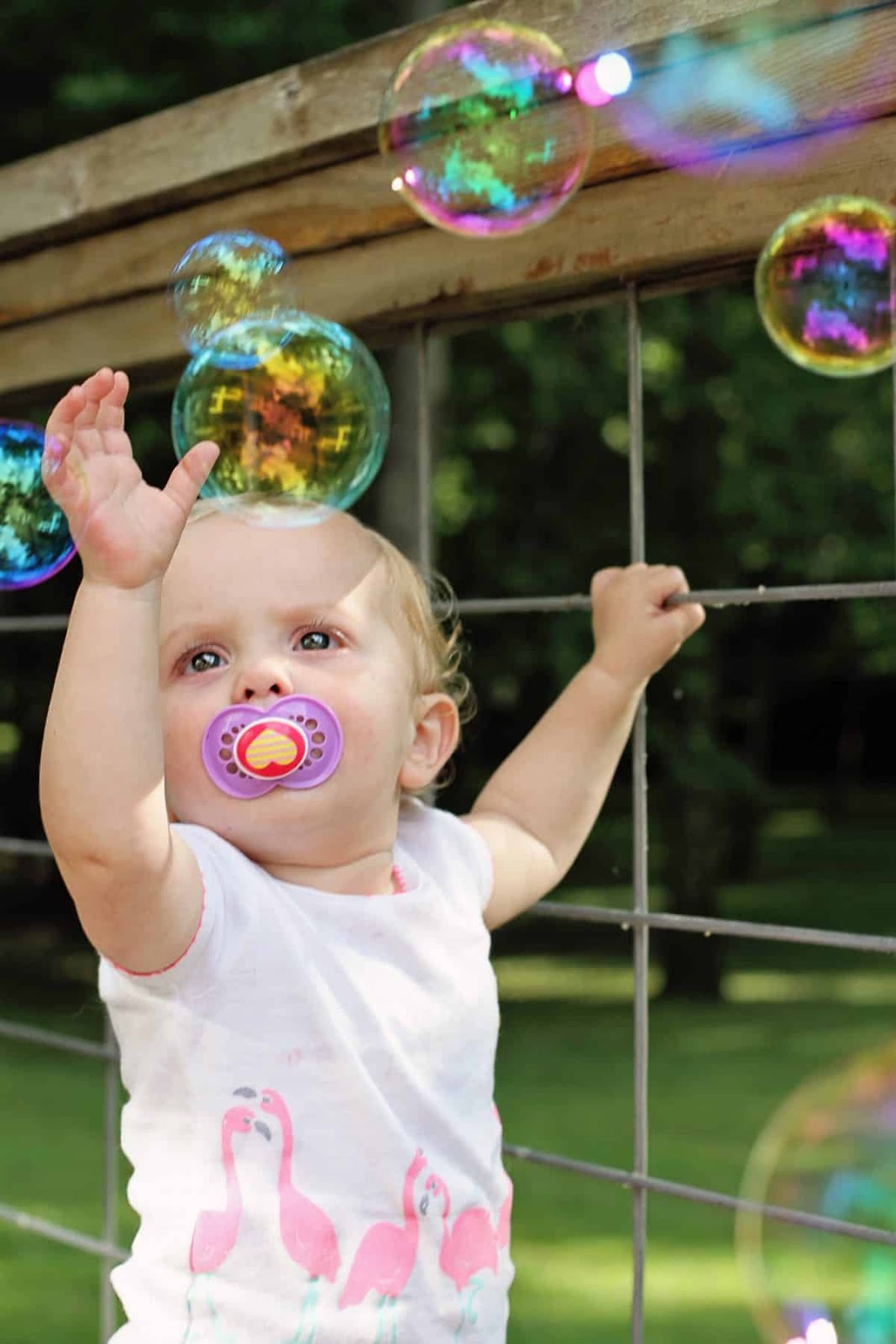
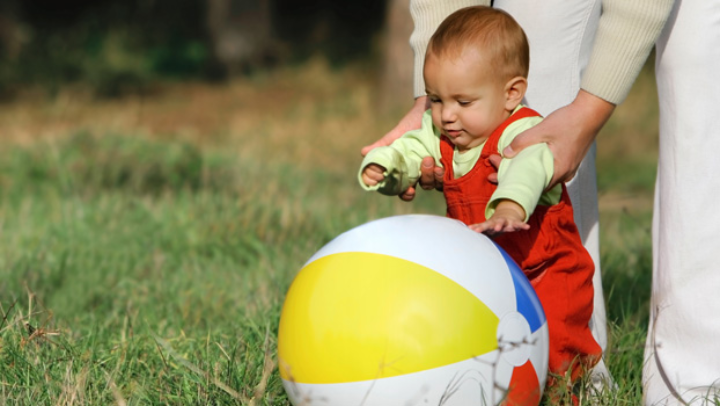
12. Play with balls and bubbles
Some of the simplest and easiest toys for little ones to play with are balls and bubbles. Take your ball game outside for new fun variations. Roll balls back and forth on a flat surface or throw them and watch them bounce. Bring out a variety of balls of different colors, textures, and sizes. Outside is the perfect place because there is plenty of space to spread out and nothing to break. Add some bubbles to an outdoor experience and watch your little one delight in the experience of touching and popping them. Bubbles are a super simple and easy outdoor activity for babies that you can do anytime and anywhere.
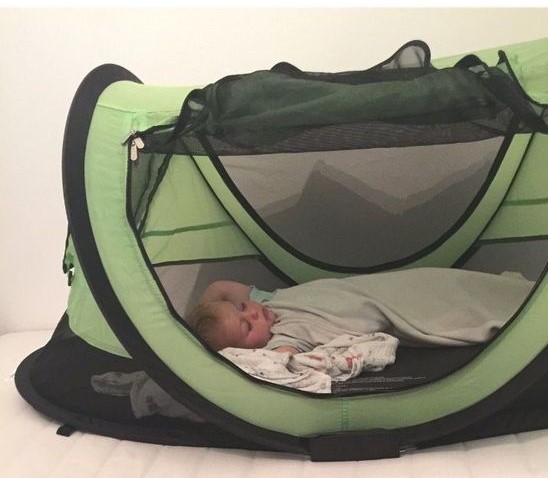
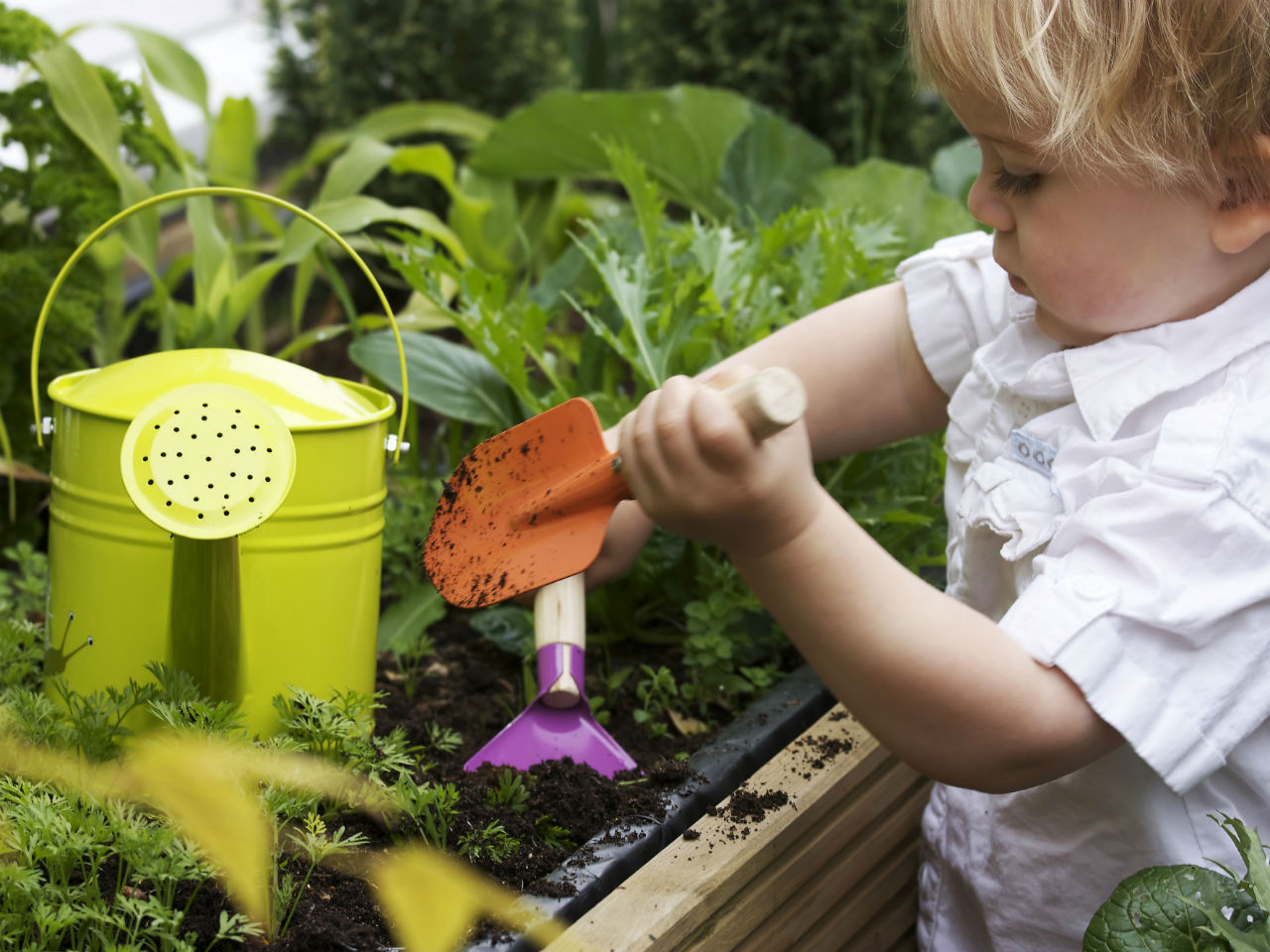
14. Garden, plant and weed
Let your little one participate in gardening and observe you taking care of your garden. From the earliest age, my kids loved lying on a blanket outside or in a bouncer while I worked in the garden. Just spending time outside together doing things that makes the parent feel good is a great outdoor activity for any baby. Little ones can listen to the natural outdoor sounds, feel the breeze, look up at the sky and watch the birds. Or play some music and have a little dance party while you weed! Talk to your little one while you plant and explain what you’re doing and why. Of course, she won’t understand, but that’s not the point! Show her your harvest and even let her taste it (if she’s old enough).
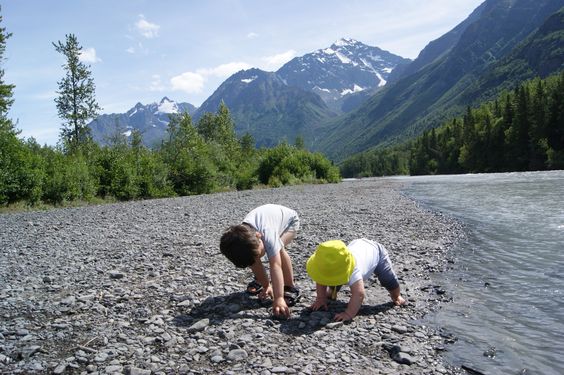
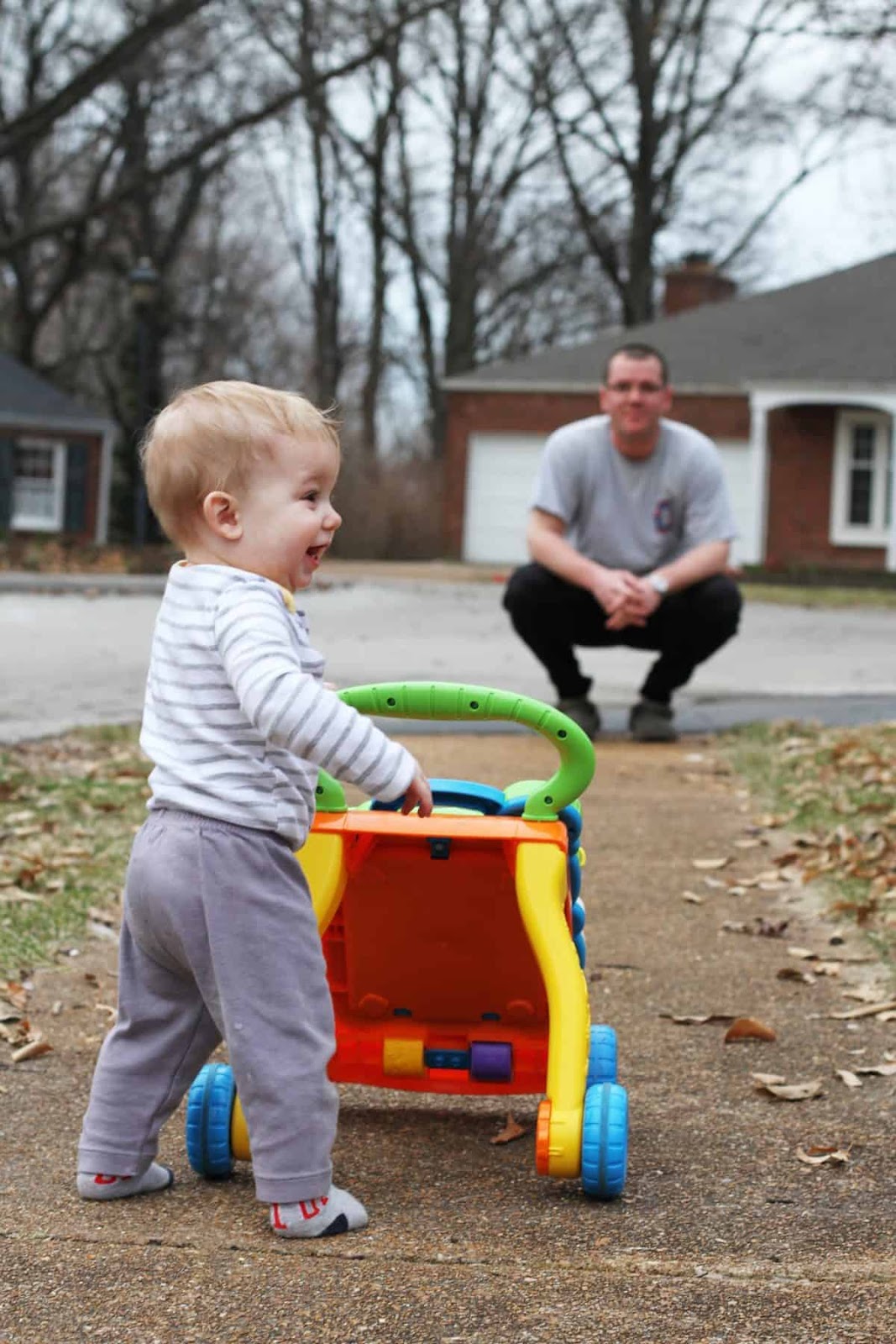
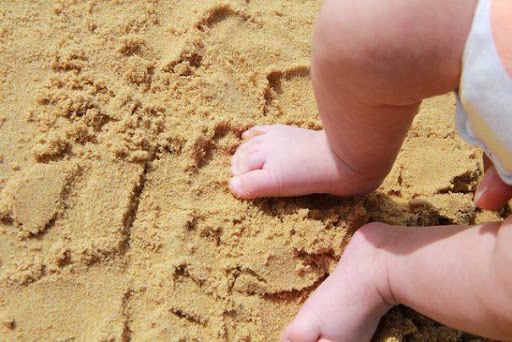
15. Practice walking
When your little one is ready to start walking, take her outside! Outdoor activities for babies don’t have to be complicated. Let them do what’s natural for them, but take it outside! Learning to walk outdoors gives her more space and fewer sharp edges. Start off in the grass, which is a nice soft surface for the inevitable trips and tumbles. Although don’t be surprised if your child becomes more interested in the grass, leaves, and sticks she finds on the ground and doesn’t get very far! Once she’s more steady on her feet, try the sidewalk or driveway. Moreover, if she needs a little assistance pulling up or balancing, walker toys move great outdoors.

Client 1
Use this testimonial to highlight your professional experience and customer satisfaction

Client 2
Use this testimonial to highlight your professional experience and customer satisfaction